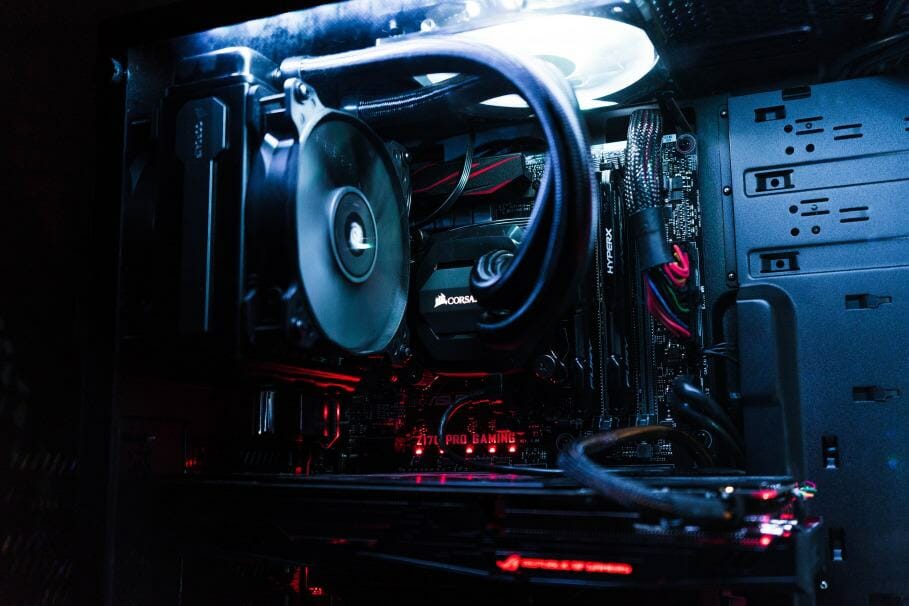Are you thinking of swapping your old GPU for the brand-new AMD Navi GPU? Do you even know what type you have and whether this brand-new model will be an improvement over the one you have now?
Table Of Contents
Let’s Talk GPU First

A GPU targets PC gaming, focusing on graphics rendering and ensuring your game screen runs as smoothly as possible. On the other hand, your CPU is like a “general practitioner” which handles different types of processes you might need, such as word documents, watching movies, listening to music, browsing the web, and so on.
Related: Best Gaming Laptop – 7 Machines for All Budgets in 2023
Now that we’ve gotten that out, the next step is to figure out the brand-new GPUs from AMD dubbed Navi. The line has three products: the RX 5700 XT 50th Anniversary Edition or RX 5700 XTAE, the Rx 5700, and the RX 5700 XT. Those are confirmed so far, but there’s a chance that more models under the line will be released soon, specifically a 5900, a 5800, and a 5600.
Similarities of the Three
Now, before we talk about each Navi release, it’s essential to see what makes them similar. The primary feature duplicated in each is the Navi 10 Architecture, also known as the RDNA. The Navi line is the first one to use this kind of architecture.
This translates to a performance per watt of around 1.5 times and a performance per area of around 2.3 times. What does this mean in terms of gaming? Well, the architecture means a dual compute design leads to improved efficiency. Think quickly rendered games, beautiful graphics, and minimal heating for your PC.
Another similarity is the fact that this is a blower-style card. Simply put, it can take in air from the fan and then expel it to the back portion for efficient cooling.
Now that we’ve done that, it’s time to look into each Navi GPU closer.
-
RX 5700 XTAE
Of the three confirmed Navi releases, this one is set to be the most expensive, which isn’t surprising since it’s also the most powerful. One look and you can tell it’s a fancy release because of the gold trim shroud and the signature of no less than Doctor Lisa Su. It’s faster than the 5700 XT by around 75MHz and has one input for HDMI. It’s been built with 3 display ports.
-
RX 5700
Of the three, this is the lowest configuration available, hence the cheaper price than the rest. It has a lower power than the RX 5700 XT with a boost clock speed of around 1,725MHz. It has a 7nm process, 8 gigabytes of GDDR6 VRAM, and 10.3 billion transistors. Note that this is the standard, so everything you can find in the RX 5700 can also be found in the higher Navi models.
-
RX 5700 XT
Next, we have the RX 5700 XT, slightly slower than the XTAE version. There’s no expensive trimming along the edging here, which accounts for the fact that it’s slightly lower in price.
In terms of performance, the 75MHz difference might seem small, but this will be very impactful come actual gaming time. The base clock is set at 1605 MHz, with the boost clock at 300MHz more. Of course, the actual speed of the component during use is somewhere between those two numbers.
How it Holds with Gaming
We can talk numbers and acronyms all we want, but the really important thing is – how does it work when it comes to gaming?
We must look at the last AMD release for GPU and other competitions to make that distinction. The closest competitor of the Navi Line is the GeForce RTX 2070. According to AMD, there’s a 25 percent increase in terms of instructions per clock for their Navi line since the RDNA architecture was built into the component. That’s an increase with all other factors staying similar – which translates to the same power consumption, settings, and perhaps even heat production.
Of course, we’ll need to test it to prove whether predictions are accurate. If we’re going just by numbers, then there’s no question that AMD’s Navi will be the most cost-effective GPU in the market once it launches. Performance-wise however, that still leaves something up for the gaming enthusiasts to discuss. Right now, many reports are still speculations so take some information with a grain of salt.
Your Current GPU
So should you buy the Navi once it hits the shelves? If you currently have an old GPU unit and want to kick things up a notch, the answer is definitely YES. If you’re using an old one, then a brand new component will improve your gaming experience, no matter what it happens to be. However, if you’re currently holding the GeForce RTX 2070, you might want to wait a bit and see how it fares with actual testing.
Predicted Release Date
Remember, this brand new GPU isn’t out in the market yet, and according to reports, the release will be around the 30th of September of this year. Now, if that date sounds familiar – that’s because the PS5 will also be released by that time. Hence, it will be a good end of the year for gamers, both for computers and consoles.
To wrap up, there’s no way to tell if the brand-new AMD Navi GPU will be worth the upgrade, especially if you’re using the brand’s latest graphics processing unit before the Navi introduction. It’s a wait-and-see situation here as hard facts about the component are still touch and go.





